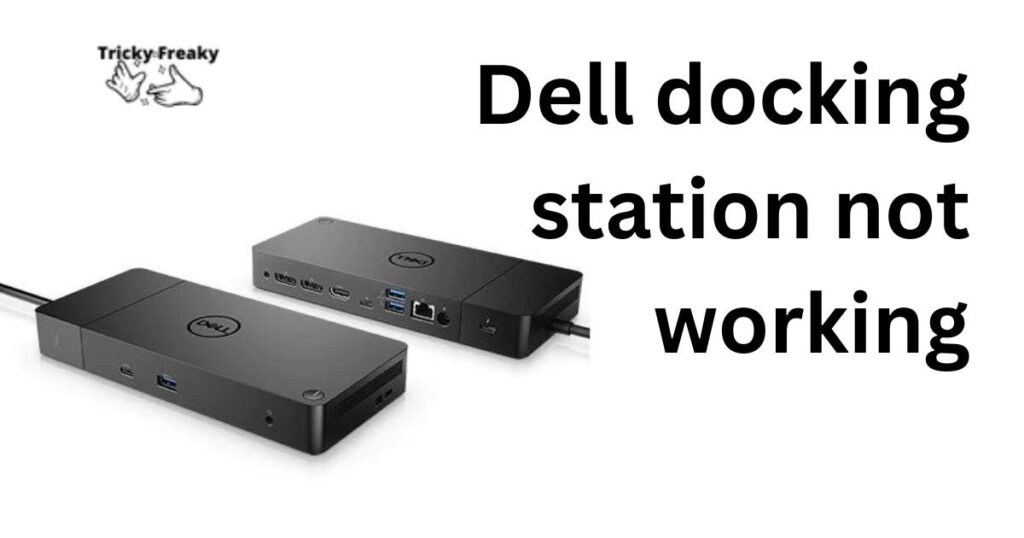In my recent endeavor to optimize my home office setup, I encountered a rather frustrating obstacle – my Dell docking station not working as expected. The seamless connectivity and convenience I had come to rely on suddenly became a source of vexation. It’s a situation that many of us have faced in this era of remote work and digital connectivity. The good news is that resolving issues with your Dell docking station not working doesn’t have to be a daunting task. With some troubleshooting and a bit of technical know-how, you can get back to a productive and hassle-free workflow. So, whether you’re a seasoned professional or just someone looking to enhance your remote work experience, here are the steps to take.
In the ever-evolving landscape of remote work and digital connectivity, a Dell docking station is a prized asset. It promises seamless integration and enhanced productivity, but what happens when it decides not to work as expected? The frustration and perplexity can be overwhelming. Fear not, for this comprehensive guide will delve into the common reasons behind a Dell docking station not working and provide step-by-step solutions to get you back on track.

How to fix the Dell docking station not working
Encountering a Dell docking station not working can indeed be a bewildering setback, particularly when it throws a wrench into your otherwise smooth workflow. However, the silver lining is that most of these issues come with relatively simple solutions that do not demand a deep well of technical expertise. Whether your docking station is refusing to establish a connection, display content, or charge your devices, fret not – there are troubleshooting steps at your disposal to swiftly restore your setup’s functionality.
First and foremost, it’s crucial to understand that these disruptions, while vexing, often have straightforward resolutions. You don’t need to be a tech whiz to address them effectively. Whether it’s a connectivity hiccup, a display glitch, or power-related concerns, the following troubleshooting steps are designed to empower you to regain control over your docking station’s performance and, consequently, your work environment. So, let’s dive into the steps that can help you navigate the complexities of a malfunctioning Dell docking station and get back to a productive and hassle-free work routine. Whether your docking station is failing to connect, display content, or charge devices, we’ve got you covered. Let’s dive into the intricacies of troubleshooting and reclaim your work routine.
1. Connection Woes
- Reason: Loose or improperly connected cables can often be the culprit behind a non-functional docking station. Over time, connectors may become loose due to regular plugging and unplugging, leading to connectivity issues.
- Solution: Start by meticulously inspecting all connections. Unplug and re-plug each cable to ensure they are securely fitted. Additionally, try different USB ports on your laptop to rule out any port-specific issues.
2. Outdated Drivers
- Reason: Outdated or incompatible drivers can hinder the performance of your docking station, causing various connectivity problems.
- Solution: Visit the official Dell website and locate the latest drivers for your specific docking station model. Download and install them, ensuring compatibility with your operating system. This simple update often resolves many connectivity issues.
3. Power Cycling
- Reason: Sometimes, the docking station may encounter minor glitches that can be cleared by power cycling the device.
- Solution: Begin by disconnecting the docking station from your laptop. Next, unplug the docking station from its power source. Wait for a few seconds to allow any residual power to dissipate. Reconnect all cables and power to the docking station. This power cycle can often reset minor issues and restore functionality.
4. Windows Troubleshooter
- Reason: Windows operating systems offer a built-in troubleshooting tool designed to identify and rectify common hardware problems.
- Solution: Search for “Troubleshoot” in the Windows search bar and select the “Hardware and Devices” troubleshooter. Follow the on-screen instructions to initiate the diagnostic process. This tool can often pinpoint and resolve connectivity issues.
Learn more: docking system
5. BIOS Update
- Reason: An outdated BIOS on your laptop can sometimes lead to compatibility problems with docking stations.
- Solution: Check if there is a BIOS update available for your laptop model on the manufacturer’s website. If an update is available, follow the provided instructions to install it correctly. A BIOS update can address underlying issues that may be affecting your docking station’s performance.
6. Display Problems
- Reason: If your docking station is not displaying content on external monitors, it could be due to graphics driver issues or incorrect display settings.
- Solution: Verify that your graphics drivers are up-to-date, and ensure that the correct display source is selected in your computer’s settings. If you’re still facing issues, consider trying a different cable or monitor to rule out hardware problems.
7. Charging Problems
- Reason: If your docking station is not charging your laptop or devices, it may be due to insufficient power delivery or a faulty power adapter.
- Solution: Ensure that your docking station provides adequate power for your laptop and devices. If needed, use the manufacturer’s recommended power adapter. Additionally, check for loose connections and ensure that the power source is stable.
8. Hardware Compatibility
- Reason: Not all docking stations are compatible with every laptop model. Compatibility issues can arise if the docking station and laptop are not a suitable match.
- Solution: Double-check the compatibility of your docking station with your laptop model. Consult the manufacturer’s documentation or support resources for a list of compatible devices. If necessary, consider replacing the docking station with a model that is designed to work with your laptop.
Conclusion
Navigating the intricacies of a Dell docking station not working can be an immensely perplexing experience, leaving you grappling with disrupted workflows and high degrees of frustration. However, the silver lining here is that these issues often come with straightforward solutions that don’t demand an extensive technical background. Whether your docking station is failing to establish connections, display content, or power devices, the troubleshooting steps outlined above can be your guiding light.
As you embark on this journey of resolving docking station woes, remember to exercise patience and persistence. Transitioning from a state of perplexity to clarity often involves a series of deliberate, step-by-step actions. Checking connections, updating drivers, power cycling, running diagnostics, and considering a BIOS update are all vital steps that, when executed systematically, can lead you back to the realm of a seamlessly functioning docking station.
So, take heart in the fact that with these troubleshooting measures at your disposal, you possess the tools to regain control over your setup’s performance. While these issues may appear as sudden bursts of disruption, your ability to resolve them will ultimately lead to a smoother, more productive, and hassle-free work routine.
FAQ’s
Common issues include loose connections, outdated drivers, and power glitches.
Replug all cables securely, ensuring a snug fit.
Try power cycling the docking station to reset it.
It’s a built-in tool in Windows OS to identify and fix hardware problems.
